A Sharp Find: The Perfect Edge
Walk inside San Mateo’s Perfect Edge to be mesmerized by walls and counters covered in knives.
More than 25 brands in all: American, German, Swiss, Chinese and supposedly the largest selection of Japanese knives around.
Cleavers, chef’s knives, mezzalunas, and everything in between — some worth thousands of dollars.
Owner Mike Solaegui opened his first store in the 1990s in Burlingame. Now, his knife sharpening services can be found in locations around the Bay Area, including at various farmers markets and his flagship San Mateo store, which opened in 2001. His fleet of trucks make the rounds to many of the Bay Area’s top restaurants to care for the prized knives of chefs.
It’s also been the go-to place to take my own knives for the past couple of years whenever they get a little dull around the edges.
At the San Mateo store, you can often drop your knives off to be sharpened, then wait for them to be done.
That gives you plenty of time to window-shop. And there’s plenty to look at.
How about Kikuichi knives, the biggest sellers lately? The company originally made swords for Japanese emperors. To this day, each cutlery blade carries the image of a chrysanthemum, the symbol of royalty. Kikuichi craftsmen will actually be visiting the store, 2 p.m. to 5 p.m. Aug. 13, to give a demo on knife forging and finishing. To RSVP to that event, email: storemanager@perfectedgecutlery.com.
Sean Maffitt, store knife sharpener, showed me two popular Kikuichi knives, about $240 each. However, if you’re new to using Japanese knives, he recommends that you start with a lower-priced one until you get used to it. Japanese knives, with their thin yet razor-sharp blades, take special care. You shouldn’t cut through bone, frozen food or even hard chocolate with them. After using them, Japanese knives should be washed and dried by hand immediately. They should be stored in wooden sheaths. Treat them well and they will last a home-cook at least 40 years, Maffitt says.
For newbies wanting to take the plunge, he says every kitchen should have at least an 8-inch chef’s knife, a 10-inch bread knife and a 3 1/2-inch paring knife.
What brand to buy? Base it on what feels best in your hand, he says. German knives tend to be heavier in the handle, while Japanese knives carry the bulk of their weight in the blades.
Use a ceramic steel on your knives at least twice a week, he adds. Use a diamond steel once a month. And get your knives professionally sharpened once a year.
Maffitt was kind enough to let me watch as he went to work on my knives. Standing before a set of grinding belts and wheels that gave off the high-pitched screech of a dentist’s drill, he carefully put each blade through the paces, pivoting from one belt to another to create a bevel, then smoothing and polishing it until it gleamed.
Serrated knives take more work and cost a little more to do, as each tooth must be individually sharpened.
But this once-a-year investment in your knives is well worth making. Every time I stand before my chopping board with an onion, I know I’m glad I forked over the time and money to have them as good as new again.
Another Knife Sharpening Store: Bernal Cutlery in San Francisco

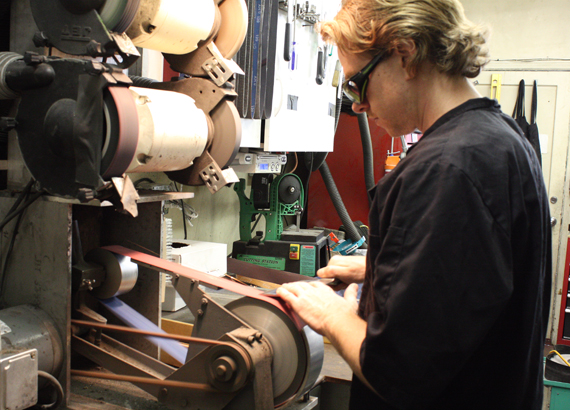
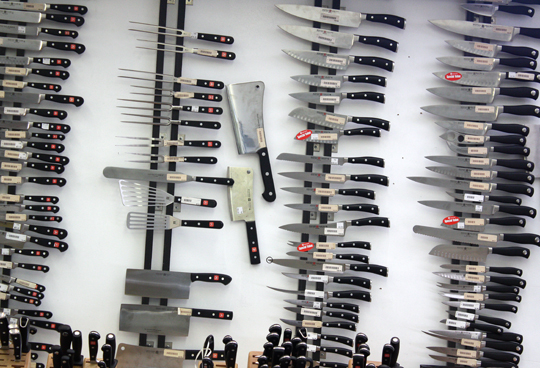
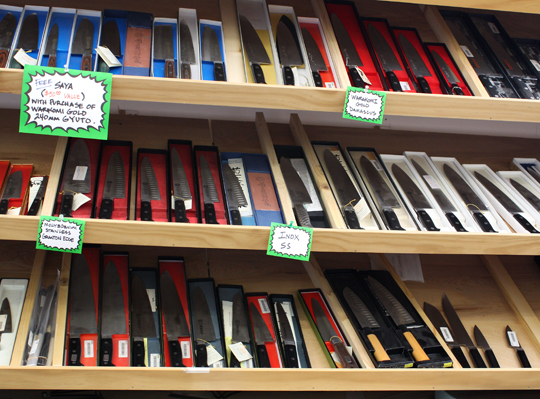
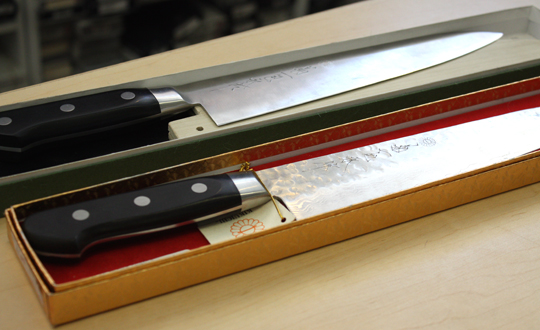
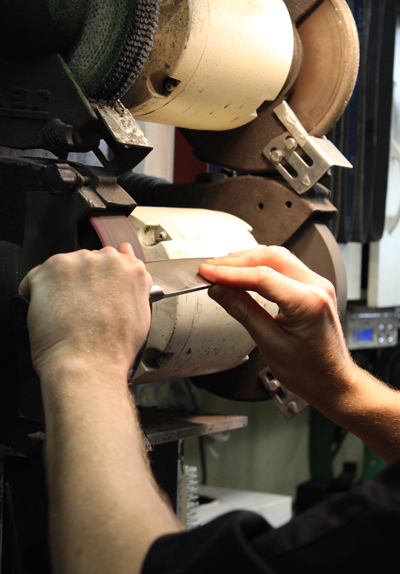
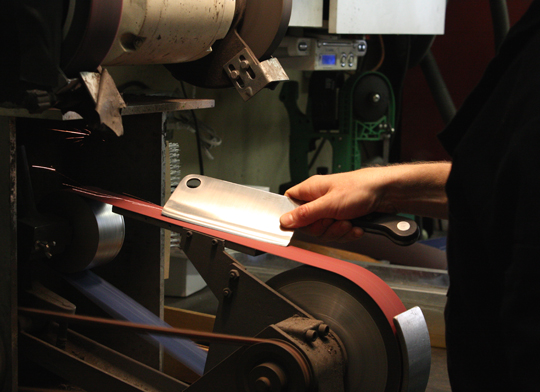
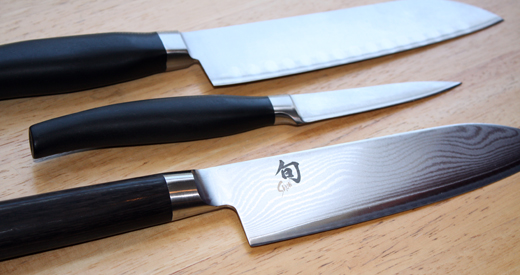
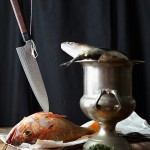
It’s so important to have the best knives – they make your life so much easier.
Mike’s great – he sold me some Japanese stones and taught me how to sharpen my own knives – very convenient and therapeutic!
A good knife makes such a difference! And I never really considered that a serrated knife took longer as each tooth has to be individually sharpened but of course that makes total sense! 😀
I have a fear for knives, I always leave about half an inch between my fingers and the blade when I cut things, like onions. My mom said that even the dullest of knife has no problem cutting a finger (and it’s true for me 🙁 ), so I wonder if I could ever buy a Japanese knife, I’d be too afraid of it. 🙁
Cool store and it’s on Peninsula. I think you featured this place in SF before, right? I should check out this store. It sounds fun to check out all kinds of knives and I’m looking for some Japanese knife too. Thanks for this info!
Excellent post! I have one of those electric sharpeners that are fairly highly rated, and they certainly work OK. But nothing like getting your knives professionally sharpened. It’s not easy finding people to do that these days (I’m lucky, I have a source that’s quite good). Fun post – thanks.
Alas, Sean Maffitt has moved on. Still an awesome store, though.
Bonita: Unfortunately, the store no longer keeps a knife sharpener on staff. You now have to visit one of their farmers markets stands instead or drop off your knives at a local retail store that partners with the Perfect Edge, which sends them out for sharpening, then brings them back for you to pick up afterward.
Have you ever had to sharpen a ceramic edged knife? There aren’t any professional sharpeners in my area so I am stuck trying to sharpen them myself. Do you have any recommendations? Mike sounds like a consummate professional, I love that photo of all the knives on the wall. Thanks for the article!
-James
Perfect Edge Cutlery & Sharpening has moved. We are now located at 153 South Boulvard in San Mateo, just 1 block from the old location. Mike Solaegui does all of the inhouse sharpening. We do not send it out. Tara Solaegui-Ransfer has returned to expand the Cutlery Selection and Sharpening Services offered. Sean Maffitt has also returned to Mobile Service.